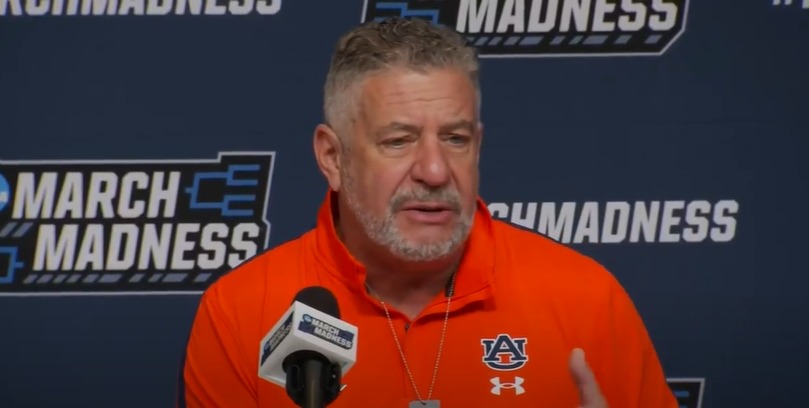With his commanding presence on the sidelines, fiery midway statements, and unmistakably animated style, Bruce Pearl has long been a popular figure. However, a shockingly specific detail has fans scratching their heads lately, and it has nothing to do with his win-loss record or recruiting skills. It’s his stature. He is modestly 5’11” according to one online source, but Auburn University maintains that he is a remarkable 6′ 6″. More than just a difference, that seven-inch gap is a source of curiosity that is changing how people view the man behind the clipboard.
In sports, where statistics are examined with near-surgical accuracy, it is uncommon for a coach’s physical attributes to generate attention. But because it gives Bruce Pearl’s already enormous presence a more tangible dimension, his purported height has become a topic of fascination. By coaching standards, his height—if he is 6’6″—is not just tall; it is towering. This is especially evident when he is pacing the sidelines or making pointed gestures during crucial games.
| Bruce Pearl Bio & Professional Summary | |
| Full Name | Bruce Alan Pearl |
| Nickname(s) | The Pearl, Papa Smurf, The Master of Mayhem |
| Date of Birth | March 18, 1960 |
| Place of Birth | Boston, Massachusetts, United States |
| Height | 6 feet 6 inches (198 cm) |
| Weight | Approximately 168 lbs (76 kg) |
| Education | Boston College (Business Administration, 1982) |
| Religion | Jewish |
| Marital Status | Married to Brandy Pearl (since 2009), previously married to Kim Shrigley (1982–2007) |
| Children | Jacqui, Steven, Leah, Michael |
| Coaching Career Start | 1982 (as student manager at Boston College) |
| Notable Coaching Positions | Southern Indiana, Milwaukee, Tennessee, Auburn |
| Major Achievements | Division II National Championship (1995), multiple NCAA Tournament appearances |
| Current Role | Head Coach, Auburn Tigers Men’s Basketball |
| Reference Link | Auburn Tigers Official Site |
Pearl’s height is unusually high by coaching standards, especially when compared to his peers who are rarely taller than six feet. His size adds to his already erratic and animated presence courtside. It’s hard to miss the sight of him charging across the baseline or leaning in to give a player advice. Perhaps unconsciously, some players may react more attentively to his air of dominance.

Curiously, his son Steven Pearl, a forward for the University of Tennessee, is only an inch shorter than his father’s stated height (6’5″). This particular detail not only makes Auburn’s listing more credible, but it also encourages physical and professional comparison between father and son. They are strikingly symbolic of the transmission of influence and legacy.
It’s become evident from interviews and anecdotes that Bruce Pearl does more than merely coach a team; he performs. Pearl embraces college athletic theater, from painting his face in Auburn colors to tearing off his shirt at student rallies. His physicality adds to the memorability of these stunts, especially if he is 6’6″. It’s branding as much as coaching.
Coaches such as Pearl don’t merely follow playbooks. They influence culture, energize fan bases, and—perhaps most importantly—draw in new members. Meeting a coach who is literally tall can have a profound effect on high school athletes. It bolsters the sense of authority. It adds significance to that initial handshake. It transforms a routine campus visit into an unforgettable experience.
Pearl’s official height and previous reports, such as one from Tuko News, which stated that he was 5’11”, are in contrast, according to some observers. That might not seem like much, but the disparity shows how biographical information can change online, particularly when contradicting information is repeated by several sources. It serves as a reminder that not all published content is fact-based, particularly in the era of automatically generated bios.
Perhaps the more important lesson, though, is that Pearl’s stature—whether literal or figurative—reflects his trajectory in the coaching world. Always moving, versatile, and eye-catching. He has created enduring programs, handled controversies, and made comebacks. Similar to his contentious height, every change in his career symbolizes his refusal to fit into a box.

1 Comment
Pingback: Juju Watkins Surgery Update What This Means for Her Future on the Court - White Nails